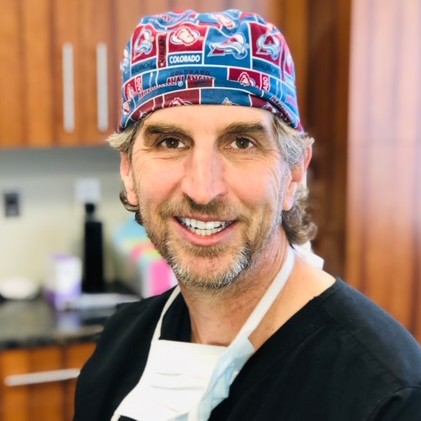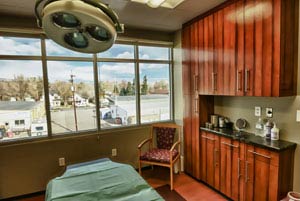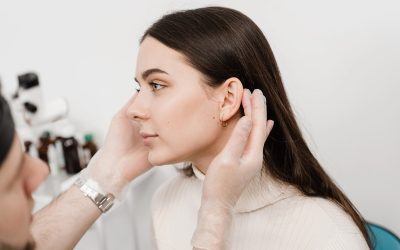Rhinoplasty, often referred to as a “nose job,” is a highly personalized procedure that can transform both the appearance and functionality of the nose. However, one of the most frequently asked questions is: “How old do you have to be to get rhinoplasty?”. This article explores the nuances of determining the right age for rhinoplasty, balancing physical development, psychological preparedness, and expert guidance to ensure the best results for each individual. By understanding these factors, prospective patients can make informed decisions about when to embark on their rhinoplasty journey.
What Is the Minimum Age for Rhinoplasty?
The minimum age for rhinoplasty is closely tied to the completion of nasal growth, which varies between individuals. For most females, the nose typically finishes developing around the age of 16, while for males, it may take slightly longer, often until 17 or 18. This difference is due to the natural variations in growth patterns between genders. Performing rhinoplasty before the nose has fully matured can result in complications, such as altering the natural growth trajectory or requiring revision surgeries as the nose continues to develop.
While physical maturity is a crucial factor, emotional and psychological readiness are equally important. Adolescents seeking rhinoplasty may be influenced by external pressures, including societal beauty standards or peer opinions. It’s essential that they approach the decision with realistic expectations and a clear understanding of the procedure’s implications. Surgeons often recommend comprehensive consultations, which include assessing the individual’s motivation and ensuring they are mentally prepared for the outcomes and the recovery process.
For patients under 18, parental consent is legally required, and the involvement of a supportive guardian can provide invaluable guidance. Ultimately, the minimum age for rhinoplasty is not a fixed number but a combination of physical development, emotional maturity, and professional evaluation. These factors collectively determine the right timing for this transformative procedure.
Factors Influencing the Right Age for Rhinoplasty
Determining the right age for rhinoplasty requires careful consideration of both physical and emotional factors. While nasal growth completion is a crucial milestone, other aspects, such as the individual’s mental preparedness and overall health, play an equally important role. Here are the key factors that influence when someone is ready for rhinoplasty:
- Physical Maturity: The nose must have reached its full developmental size to ensure lasting results. Performing surgery too early can interfere with growth patterns and lead to future complications.
- Emotional Readiness: Candidates should be emotionally mature, capable of making informed decisions, and have realistic expectations about the outcomes of the procedure.
- Social and Psychological Motivations: For younger patients, it’s essential to distinguish between personal goals and external pressures, such as societal beauty standards or peer influence.
- Parental Support: For patients under 18, the involvement of a parent or guardian is vital for ensuring the decision is well-informed and supported.
- Health and Lifestyle Considerations: Good overall health, non-smoking status, and adherence to post-surgical care are important factors for a successful recovery and outcome.
- Individualized Surgeon Evaluation: A thorough consultation with an experienced surgeon is essential to assess all these factors and determine if the timing is appropriate for the patient’s unique situation.
Taking these factors into account helps ensure rhinoplasty is performed at the optimal time, maximizing both the aesthetic and functional benefits of the surgery.
Teen Rhinoplasty Considerations
Teen rhinoplasty requires special attention, as adolescents often face unique emotional and physical challenges when considering cosmetic surgery. While many teenagers seek rhinoplasty to address cosmetic concerns or functional issues, it’s essential to assess their motivations and readiness carefully. One critical factor is distinguishing personal goals from external pressures, such as peer influence or societal beauty standards. Teens may feel compelled to pursue surgery due to these influences, making it important to ensure their decision is truly their own.
Another significant consideration is the physical maturity of the nasal structure. Performing rhinoplasty before the nose has fully developed can lead to complications, including growth interference and the potential need for revision surgery later. Most surgeons recommend waiting until the nasal structure has matured—around 16 for females and 17-18 for males—to ensure stable, lasting results.
Emotional maturity is equally important. Adolescents undergoing rhinoplasty must demonstrate realistic expectations and an understanding of the recovery process. They should be prepared to follow post-operative instructions and recognize that healing takes time. Parental involvement is also crucial during the decision-making process. Supportive guardians can help teens make informed choices and provide guidance throughout their surgical journey.
By addressing these considerations, surgeons can help teenagers achieve safe and satisfying outcomes, balancing their cosmetic goals with their physical and emotional well-being.
What Are the Risks of Undergoing Rhinoplasty Too Young?
Undergoing rhinoplasty at an age when the nose hasn’t fully matured poses several potential risks, both in terms of physical development and surgical outcomes. While it can be tempting for younger patients to address aesthetic or functional concerns early, the timing of the procedure is critical to achieving stable and lasting results. Below are some of the key risks associated with having rhinoplasty too young:
- Interference with Nasal Growth: If the surgery is performed before the nose has fully developed, it can disrupt the natural growth process, potentially leading to asymmetry or changes in shape over time.
- Higher Likelihood of Revision Surgery: Incomplete nasal growth increases the chances of needing corrective procedures later to address complications or unintended changes.
- Weakened Structural Support: Early surgery may compromise the nasal structure, especially if cartilage removal or reshaping impacts areas that continue to grow.
- Unrealistic Expectations: Younger patients may lack the emotional maturity to fully understand the procedure’s limitations, which can lead to dissatisfaction with the results.
- Increased Emotional Sensitivity: Teens are often in a critical stage of self-identity development, and an unsatisfactory outcome may have a greater psychological impact.
To minimize these risks, surgeons carefully evaluate each patient’s physical development and emotional readiness before recommending rhinoplasty, ensuring the procedure is performed at the optimal time.
Conclusion
Determining the right age for rhinoplasty is a highly personalized decision that balances physical maturity, emotional readiness, and individual goals. While age guidelines provide a general framework, a thorough consultation with an experienced surgeon is essential to assess each patient’s unique needs. At Boulder Valley Plastic Surgery, Dr. Jeffrey Swail and his team prioritize safety, precision, and long-lasting results, ensuring patients feel confident in their decision. If you’re considering rhinoplasty or want to explore whether now is the right time for you, visit us or call (303) 449-6666 to schedule a consultation. Let us help you achieve your goals!





